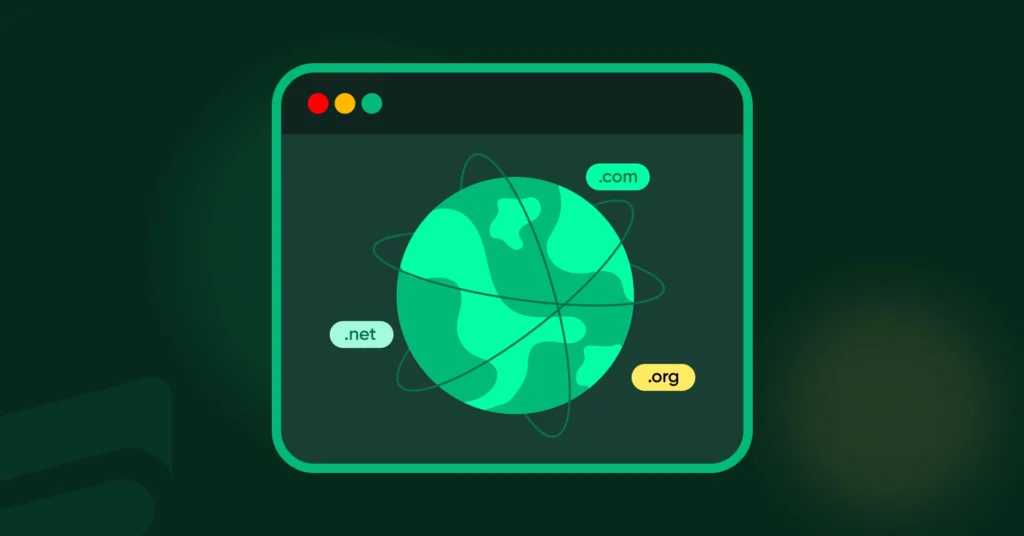
Customer support is arguably one of the most intensive aspects of a business. Especially considering how much of the revenue stream depends on it and how much cost that revenue incurs. Businesses go to quite extreme lengths to reduce customer support costs.
This is pretty logical considering how easy it is to lose sight of the returns from investing in customer support. So what can you really do to minimize or reduce customer support costs?
There are a couple of good ways to minimize the cost of customer support. In this article, we’ll look at what customer support costs are and ways you can minimize them.
What are Customer Support Costs?
When talking about any business cost it’s important to keep in mind that there are numerous factors involved. Estimating the cost of customer support is no different. To evaluate the cost of providing customer support you have to consider the following.
How badly it’s needed: Number of daily/monthly requests
The first thing to establish is how badly you need a dedicated customer support team. That usually depends on the number of customers you’re doing business with and how many active requests or queries you get from your customers.
Having a small number of customers usually means a lesser number of queries, so you can do with a small team or even an automated inbox. As the numbers grow, eventually you’ll find offering support has gotten more and more difficult. That’s when you know you have to up the spending to expand your support abilities. Usually, that’s not a bad thing because you’ll make up for it in the higher sales.
It gets a bit more complex though when you have to factor in how new your product is, and how well you provide resources. Marketing a well-tested product with readily available resources reduces the necessity of a support team and vice-versa.
The complexity of issues or requests
Considering the level of complexity of customer queries is just as important as how many you are getting. The correlation is simple — a high number of simple requests requires much less effort and time than a handful of complex issues.
The longer your agents spend on a query the higher the cost of providing support becomes. Not to mention complicated issues usually require a higher level of expertise to solve them fast, which affects the hiring process and salary scale. Ultimately contributing to support expenses.
24/7 availability
If you offer live or 24/7 support, or if your industry demands it, you have to factor that in when estimating customer support costs. It’s essential to account for someone being available around the clock…or at least in shifts. Some businesses choose rotating shifts while others might go for a ‘skeleton crew’ approach to support in the odd hours. Either way, it requires expanding some facilities or hiring more agents.
Your location
If outsourcing is out of the question then, you have to consider the cost of in-house customer support. This includes the cost of real estate and maintenance, cost of living, salary, and benefits all of which depend on where your business is based.
Take it for a spin!
Offer the best support with ZERO costs. Installation is easy and setup is a breeze. Try it NOW!
How much should you spend on Customer Support?
After going through things you need to consider to estimate customer support costs you can probably guess there’s a golden number for every business. That being said, the best practice or a rule of thumb is — to keep your support budget between 10-15% of your profits.
That being said you can also calculate the cost of customer support based on your existing teams, cost per ticket, cost per sale, and cost per revenue. From a SaaS management point of view, you can also employ Boehm’s Model to estimate maintenance and support costs. The model offers weighted variables so the results are comparatively more reliable. However, the weighting of variables is specific to SaaS products and not in general.
How to reduce customer support costs
So now that you can estimate future costs and calculate current costs, let’s check out how you can minimize the costs.
Increase efficiency
As we mentioned earlier, the cost of customer support is directly related to the number of queries and the time needed to process them. Increasing the efficiency of your support team can greatly reduce the costs of customer support. Most customer support desks offer ways to improve this efficiency. Mainly with,
1. Saved replies — Saved or sometimes called canned replies save the time it takes for agents to type out typical responses. Whenever a customer asks straightforward questions that aren’t very technical, saved replies can be used.
It lets your support agents spend less time typing redundant responses and focus more on questions that require expertise.
2. Automations — Another neat way to increase efficiency is to bring automation into your support process. It can be anything from simple assignment automation to complex conditional assignments and customer routing.
Most customer support solutions (Self-hosted and SaaS) offer automation in one form or another. For instance, Fluent Support lets you complete several tasks using automation workflows. Some of the essentials include automating, responses, agent assignment, and delete tickets. Aside from that, you can apply conditional logic to further customize the automation to suit your exact need. Other automatable tasks include adding tags to tickets, forwarding confirmation emails, etc.
When you organize your support process it becomes easier to automate these tasks. This in turn saves time and reduces the amount of redundant work your support agents need to complete.
Reduce wait times
Similar to efficiency, reducing waiting time can significantly reduce customer support costs. Increased waiting times may not incur severe expenses in the short term. However, it severely impacts your satisfaction ratings in the long run.
Less satisfied customers usually aren’t the returning kind, which can prove to be a massive blow to your revenue. Here are two ways you can ensure that doesn’t happen.
3. Instant Notifications — Your support system should offer notifications as soon as tickets are submitted. Especially when a new ticket is assigned to an agent. Fluent Support even lets you forward notifications via emails and popular business communication platforms like Telegram and Slack.
4. Cross-channel — Speaking of other channels, another great way to reduce cost is to use a help desk that syncs support requests from multiple sources. Fluent Support executes this with email piping among many other ways.
Email piping saves time and effort by converting email queries into support tickets that you can access from your dashboard. This brings down the time spent going back and forth between the help desk software and email inbox. It’s essentially turning your ticket system into an email inbox where you can respond directly without leaving the dashboard.
Similarly, it’s possible to connect Telegram, Slack, WhatsApp, and Discord for support teams. You can send ticket notifications to these channels and agents can reply to these notifications from the chats. Basically, your agents can receive and respond to tickets no matter where they are, as long as they are connected to your business platform.
This has a great impact on agent availability, not to mention the amount of time it saves for both your customers and your agents.
Be where your customers are!
Hear your customers wherever they need you.
Improve communication
For a support team, communication is everything. Not only with customers, but among agents too. It’s extremely important that your agents are able to communicate with each other with relative ease. Consider it a crucial customer service skill. Your support system should intuitively ease up this communication.
5. Internal Notes — Attaching internal notes makes it easy for agents to mark exceptions or unique predicaments a customer might bring in. Fluent Support shows internal notes for example inside tickets and is only visible to agents.
Internal notes are especially helpful when following up on previous tickets, or when you assign a new agent. Having these notes at hand greatly reduces the time your agent needs to get up to speed with customers.
Not only does it contribute to the personalization of your content it also helps prepare agents better. This improves the quality of support, customer satisfaction, and required time. Ultimately reducing cost.
6. Collision detection — Another way customer support assets are wasted is by a collision between agents on the same ticket. If an agent has already responded to a ticket, what’s the point of someone else getting in that conversation? None to be honest.
Not only does it make work more difficult, it actually undermines your business’s professionalism and impression. For the most part, customers hate forwarding to a new agent and explaining their problems all over again. This is why collision detection is a great feature to have in your support system.
7. Activity logs — Another essential way a support system can reduce customer support costs is by monitoring detailed activity logs and reports. These make it easy to evaluate how much activity there is on your support platform. In most cases, this is important to minimize wastage and track down inconsistencies in the team’s efforts.
Choose wisely: Better Customer Support reduces costs
The last point we’d like to make regarding costs is that you need to have a support system that permits your business growth. Most support platforms slap a hefty growth tax on small and medium enterprises.
The growth in these enterprises is usually fast which is hard to scale with support plans charged by the agent or the number of tickets.
The best way to avoid this from happening to your business is, to begin with, a system that is scalable for you. Fluent Support is a good example because the pricing is fixed, regardless of the number of agents or tickets. This is a key difference between SaaS-based solutions and self-hosted.
Your own Support Portal in 5 minutes!
Start off with a powerful ticketing system that delivers smooth collaboration with unlimited room for your customers.
Another way you can incur huge costs is by using software that depends on third-party premium add-ons. Because crucial features aren’t included in the basic plans it greatly reduces your ability to control expenses. For small and medium enterprises it can get out of hand very fast. Keep this in mind when checking out Support solutions for your business.
Other ways a tool can reduce the costs is by,
Being easy to use — A steep learning curve increases time and effort increasing costs. An easy-to-learn tool reduces this cost in every aspect.
Requiring minimal maintenance — The less bulky or resource-heavy a solution is the more reliable it is in the long haul.
Make sure to evaluate all of this early on to reduce customer support costs in the future.
Wrapping up
The cost of customer support like most business costs depends on multiple and intertwined factors. Estimating future costs and calculating current costs are essential to keep the process productive and effective. We hope this article brings you closer to properly evaluating and minimizing the costs of customer support. While many of the points we talked about are great on their own to reduce customer support costs in some form or other, using them together can make a huge difference in the long run. The easiest thing you can do is choose a help desk plugin that ticks all these boxes, with the minimum added costs possible.
Until next time, happy serving.













Leave a Reply